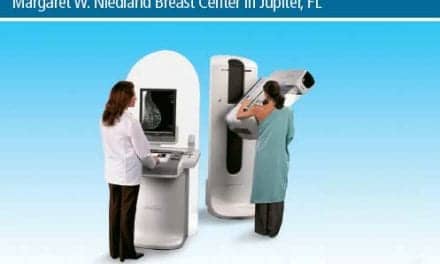Gathering Evidence to Gain Coverage

Barry Siegel, MD
In February, the National Oncologic PET Registry (NOPR), in response to a February 2010 Centers for Medicare and Medicaid Services (CMS) National Coverage Determination, opened the NOPR registry to collect evidence on the value of PET scans with F-18 sodium fluoride (NaF-PET). After an approximately 2-year process, this new component of the NOPR was opened to allow for NaF-PET scans to be reimbursed by CMS, under its coverage with evidence development program.
“The goal is to be able to get some of these studies paid for so that we can get more evidence,” said Barry Siegel, MD, cochair of the NOPR Working Group. “We found ourselves in a bit of a catch-22: we couldn’t get coverage because we didn’t have the evidence, but we couldn’t get evidence because we didn’t have the coverage.”
Born of a shortage of technetium-99m—the radioactive isotope used in traditional bone scans—and a need to find a viable alternative, as well as the belief that NaF-PET scans give a more thorough and precise result, the NOPR set about creating this registry in the hope that eventually CMS will fully cover NaF-PET scans.
“The bottom line about sodium fluoride is that its sensitivity for detecting bone disease and its specificity for correctly characterizing bone disease are better than those of a conventional bone scan, which we’ve been using for years,” said Siegel. “About 2 years ago, when we were in the midst of the significant shortages of molybdenum-99, and therefore shortages of Tc-99m, nuclear medicine facilities were having trouble getting enough material to do conventional bone scans. There was a push to try to start using NaF-PET more often in the hope that the nuclear medicine community at large could get CMS and other insurers to reimburse for NaF-PET bone scans as a way to alleviate the shortage.”
However, CMS has a policy under which procedures that have limited evidence will be reimbursed only with evidence development, data that will eventually contribute to the organization’s decision on whether to cover the procedure. And because of the aforementioned lack of coverage, there was a relatively small amount of evidence available to CMS in formulating its decisions. However, Siegel believes that while this process appears to be an obstacle in the potential coverage of NaF-PET scans, the data collected are expected to be valuable.
“It’s a different kind of evidence than what one gets from a tightly controlled clinical trial because this is gathering data prospectively about procedures that are being done in a real-world setting across the spectrum of indications that referring physicians have in ordering the test,” he said. “The term that has been used is practice-based evidence as opposed to controlled clinical trials. There are some advantages to these: very large data sets, for example. There are also some disadvantages: it’s hard to find a control population, for example.”
Whether this registry will eventually lead to full CMS coverage of NaF-PET scans is yet to be seen, but in the interim, this process will allow NOPR, as well as participating sites, to actively pursue the collection of evidence regarding the utility of the procedure.
“If someone covers the scan so at least the basic costs of doing the procedure are dealt with, then it’s possible to gather evidence both at the level of the registry, which is what we’re doing, and for individual sites that are doing a substantial number of these, to put together an even more detailed series that will provide additional evidence of the effectiveness of the procedure,” said Siegel.
—Chris Gaerig





